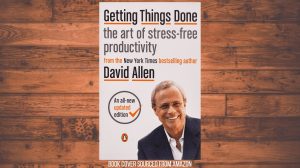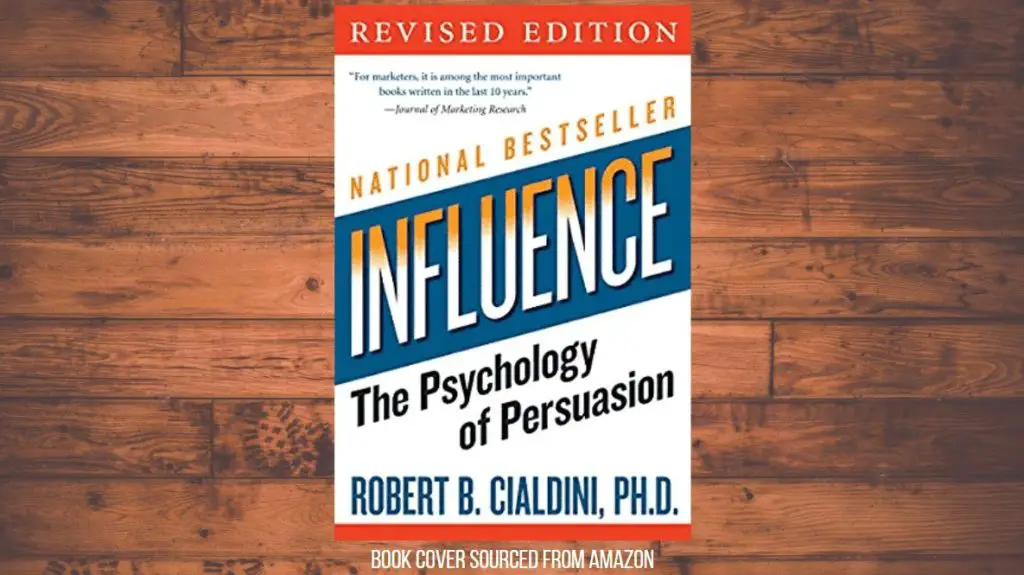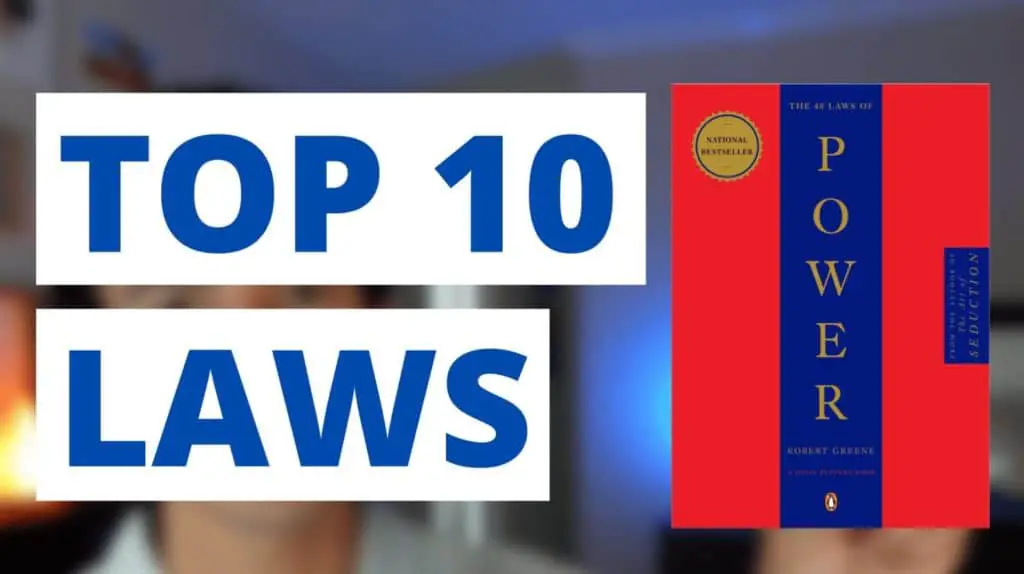This post may contain affiliate links, which means I’ll receive a commission if you purchase through my links, at no extra cost to you. Please read full disclosure for more information.
Buckle up for a book review and summary on one of the most popular books on productivity: Getting Things Done by David Allen.
About Post Author
ABOUT
- Title: Getting Things Done
- Sub-title: The Art of Stress-Free Productivity
- Author: David Allen
- About the author: David Allen is one of the oldest and most well-known proponents of personal organization. His books, “Getting Things Done: The Art of Stress-Free Productivity” and “Getting Things Done: For Creative Types” focus on self-management and offer a collection of methods that can help people get control over their lives. He has been recognized as one of Forbes’ top 5 executive business coaches in the U.S.
- Pages: 352
- Published: 2015 (Revised Edition)
- Link to book
HIGH-LEVEL SUMMARY
In his book, “Getting Things Done“, David Allen discusses the importance of productivity and how to achieve it.
He argues that the best way to become productive is by clearing your mind of any distractions and focusing on the task at hand. To do this, you need to create a “to do” list and then break down each task into smaller, more manageable steps.
As expected, this book is about getting things done, but also has a greater purpose than that. This book is about helping you be appropriately engaged with your work and life. Allen’s goal is to help people remove stress and anxiety from their personal lives, so they can pursue what they most like to pursue.
In this book, you’ll find insights and strategies on how to…
- Have more energy
- Be more relaxed
- Have more clarity
- Be present in the moment
- Get a lot more accomplished with less effort
You’ll find that Getting Things Done is extremely practical. Anyone can apply all, or a portion of, the lessons shared. The components of the system are modular and can be adapted to one’s perfect use.
The book is divided into 3 parts:
- Part 1: Brief overview of the GTD system and methodologies
- Part 2: A step by step on how to implement the system and apply the models
- Part 3: A deeper dive into the subtler, more profound results you can achieve within your work and life.
RECOMMENDATION
If you are someone who is trying to organize your life so you can achieve what you want, Getting Things Done is a book you want to read. Since its original publishing in 2001, it has been a top-recommended book for productivity.
This book can benefit complete beginners as well as productivity veterans that are looking to improve their methods.
There is so much value within the pages of this book. If you take away just 10% of the lessons David Allen shares, I believe your life will drastically change.
TOP 35 TAKEAWAYS
WHAT I LIKED
BENEFITS TO YOUR LIFE AND CAREER
15 ACTIONS YOU SHOULD TAKE
1. Get in the habit of keeping nothing on your mind. Anything you consider unfinished in any way must be captured in a trusted system outside your mind, or what I call a collection tool, that you know you’ll come back to regularly and sort through. You can use a physical in-tray, pen and paper, or a digital app like Google Keep
2. You must clarify exactly what your commitment is and decide what you have to do, if anything, to make progress toward fulfilling it.
3. Once you’ve decided on all the actions you need to take, you must keep reminders of them organized in a system you review regularly.
4. Exercise: I suggest that you write down the project or situation that is most on your mind at this moment. What most bugs you, distracts you, or interests you, or in some other way consumes a large part of your conscious attention? Got it? Good. Now, describe, in a single written sentence, your intended successful outcome for this problem or situation. In other words, what would need to happen for you to check this project off as “done”? Now write down the very next physical action required to move the situation forward.
5. Start from the bottom-up when working on your personal productivity movement. While it seems counterintuitive, you want to start with the ground-floor level activities and commitments and later work up to your overall purpose and vision.
6. Only include three things go on your calendar: time-specific actions; day-specific actions; and day-specific information. Time-Specific Actions is a fancy name for appointments. Day-Specific Actions are things that you need to do sometime on a certain day, but not necessarily at a specific time. Day-Specific Information are things you want to know about on specific days—not necessarily actions you’ll have to take but rather information that may be useful on a certain date.
7. It’s a good habit, as soon as you conclude an action on your calendar (a meeting, a phone call, the final draft of a report that’s due), to check and see what else remains to be done. Review whatever lists, overviews, and orientation maps you need to, as often as you need to, to get their contents off your mind. Projects, Waiting For, and Someday/Maybe lists need to be reviewed only as often as you think they have to be in order to stop you from wondering about them.
8. Prioritize having a weekly review. The Weekly Review is the time to: Gather and process all your stuff. Review your system. Update your lists. Get clean, clear, current, and complete. You have to use your mind to get things off your mind.
9. Define your purpose. By defining your purpose of doing something (e.g. a project), it creates decision-making criteria. Given what you’re trying to accomplish, are these investments required? if there’s no good reason to be doing something, it’s not worth doing.
10. You will resist the whole process of capturing information if your reference systems are not fast, functional, and fun. A simple and highly functional personal reference system is critical to this process.
11. You can categorize your actions based on where you can complete them. Work, home, waiting in an office, while walking, etc.
12. Use the two-minute rule. The rationale for the two-minute rule is that it’s more or less the point where it starts taking longer to store and track an item than to deal with it the first time it’s in your hands—in other words, it’s the efficiency cutoff. You’ll be surprised how many two-minute actions you can perform even on your most critical projects. That said, you shouldn’t become a slave to spending your day doing two-minute actions. This rule should be applied primarily when you are engaging with new input; for example, processing your in-tray, interacting with someone in your office or home, or simply dealing with some random intersection in the hallway.
13. Objectives like “Maintain good physical conditioning” or “Keep my team motivated” may still need to be built into some sort of overview checklist that will be reviewed regularly.
14. Reviewing your system on a regular basis, reflecting on the contents, and keeping it current and functional are prerequisites for that kind of clarity and stability. All of this means your system cannot be static. In order to support appropriate action choices, it must be kept up-to-date.
15. Goal-Striving/Attainment Via Implementation Intentions. Goals (desired outcomes) are a vital part of life, and GTD can serve to facilitate both personal and professional goals. Gollwitzer and Oettingen have conducted a major line of research on goal achievement, incorporating the idea of “implementation intentions.” In a nutshell they argue that the best way to ensure goal striving (taking actions toward a stated goal) is to create a cause-and-effect link in your mind about when certain goal-relevant actions will be taken. When you make plans (implementation intentions) ahead of time and decide what actions will be carried out in which contexts, the proper behavior is nearly automatically enacted instead of being drawn from your limited reserve of willpower. In other words, if you can trust that something you will more or less do automatically will provide sufficient direction and juice to move you toward your outcome, you’ll have that juice when needed. It won’t be depleted by your constant worrying or thinking about what you should do and when.
RESOURCES
Getting Things Done can be found on Amazon at this link here if you are interested in reading



